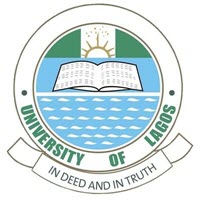Below is a summary of the abstract you submitted. Presenting author(s) is shown in bold.
If any changes need to be made, you can modify the abstract or change the authors.
You can also download a .docx version of this abstract.
If there are any problems, please email Dan at dar78@pitt.edu and he'll take care of them!
This abstract was last modified on March 15, 2022 at 11:57 p.m..

Mycobacteriophage Peterson was isolated from soil using Mycobacterium smegmatis mc2155 as the host. Peterson is a member of Cluster A, Subcluster A1 with a length of 52,386 bp. Phage Ajay is the closest match to Peterson’s genome according to the Gene Content tool. The goal of our study was to manually annotate the phage by confirming potential genes and identifying gene functions. We determined the most likely open reading frames to identify each gene in the phage genome using the annotation program, DNA Master, and guided by GeneMark coding potential graph. We used the Starterator application to determine whether the start site designated for each gene aligned with other start sites of homologous genes, as well as the probability of the matches. Finally, we assigned gene functions using Phamerator, phagesdb.org and NCBI BLASTp searches, and HHPred searches. We asked the following questions while annotating the phage Peterson: why was tRNA discovered in the Peterson but not in the subcluster members closest to it? How did the phage get it? Is it possible to characterize the phages in subcluster A1 using a single gene, specifically the tape measure protein? Peterson possesses 91 genes and a tRNA. Many genes in the left arm of the genome have well-predicted functions, such as structural proteins: minor tail subunit, major tail subunit, tail assembly chaperone, tape measure, portal, and terminase; and functional proteins: lysin A, lysin B, integrase, and protease. Many genes near the end of the right arm of the genome lacked known functional domains. It had a reverse gene 8 and a forward gene 95 from the auto-annotation results which were deleted. Peterson shares genome sequence similarities with several phages in cluster A1, such as Kenmech (65 phams), Arcanine (67 phams) and Big3 (69 phams). Like other Cluster A phages, the phages may have nearly identical gene sequence but a different biology. Interestingly, we discovered multiple gaps region between genes scattered along this phage’s genome, with the largest being 329 bp. The sequences were BLASTed, and the results revealed that there were no protein-coding genes within the gaps. The complete annotation of Peterson's genome, as well as its comparison with other mycobacteriophages, will add to our insights into the phage biology and evolutio

